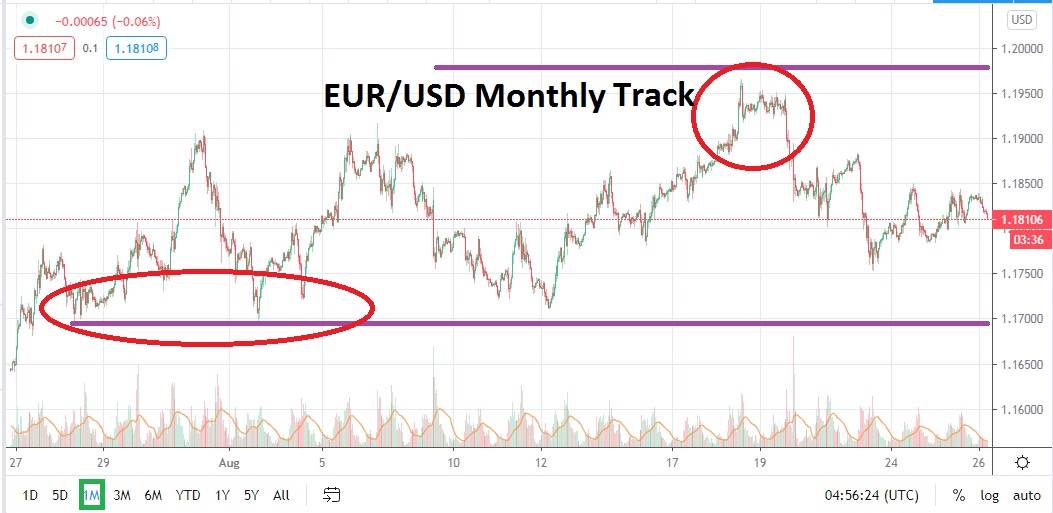The EUR/USD has seen a significant bull trend emerge since the middle of March this year. The forex pair began trading in early August with potential worrying developments for speculators who were pursuing the buying momentum of the EUR/USD as a selloff developed in late July. However, the 31st of July ignited the late selling exactly after the Euro hit a high target near 1.19000 and began to reverse and challenged support near 1.16970 on the 3rd of August.
After hitting early August trading lows, speculators know what developed afterwards. The EUR/USD’s bull movement began in earnest again and promptly began to test new highs quickly. On the 5th of August the 1.19000 level was touched and essentially failed to be punctured higher. The remainder of that first week in August witnessed choppy trading as highs were battled for and showed there was not enough buying power to take the EUR/USD beyond the 1.19000 level with any real commitment.
The 7th of August saw the beginning of a small downturn which took the EUR/USD slightly below the 1.17000 level on the 12th of August. Why this history lesson folks? Because the EUR/USD promptly began another surge upwards and on the 19th of August the forex pair broke through the 1.19000 juncture and touched highs near 1.19500. So as August trading concludes and September is looked forward to and speculators try to gain insights regarding their perceptions, they should take into consideration the past two weeks of trading which has produced some selling of the EUR/USD has been seen before.
Traders should know that a solid mid-term trend never moves in one direction every day. Reversals are a part of the trading landscape speculators must deal with and can even learn to gain an advantage with by learning to trade the short term differently than they do long term positions. In other words a trader can sell the EUR/USD with a quick speculative selling position, while also having a buying position working which is a long term trade and hopes to profit from a technical trend which they believe has been demonstrated.
Just because the EUR/USD has seen some selling pressure the past two weeks and has tested support ratios doesn’t mean its mid-term bullish trend has expired. While the short term may show the forex pair is challenging the 1.18000 juncture now, it doesn’t mean a reversal won’t develop near term and once again produce significant buying of the EUR/USD. Technical traders should look at the support levels of the EUR/USD and acknowledge that incrementally they have climbed the past three months. In fact the EUR/USD continues to test its high water marks.
Buying the EUR/USD continues to look like the correct trade for speculators who have the intention of seeking a longer term trade. The US Federal Reserve is becoming more politically inclined on a nearly monthly basis. The central bank continues to alter its core philosophies and takes on roles which were not initially mandated to oversee; the buying of corporate bonds is a primary example of this change in policy.
Speculators should look at the selling reversals of the EUR/USD with skepticism. Understanding the periodic selling waves of the forex pair are likely not a long term bear trend emerging, but simply the sign of a healthy market place which enjoys the dynamic of trading reversals is important. Traders should expect bullish sentiment for the EUR/USD to be demonstrated again in September.
EUR/USD Outlook for September:
EUR/USD Speculative price range September: 1.16800 to 1.20000
Support at 1.17250 appears to be strong, but if that is broken the EUR/USD could challenge the 1.16800 juncture.
Resistance at 1.19000 could produce a significant battle but if punctured higher the 1.20000 could become a realistic target.

